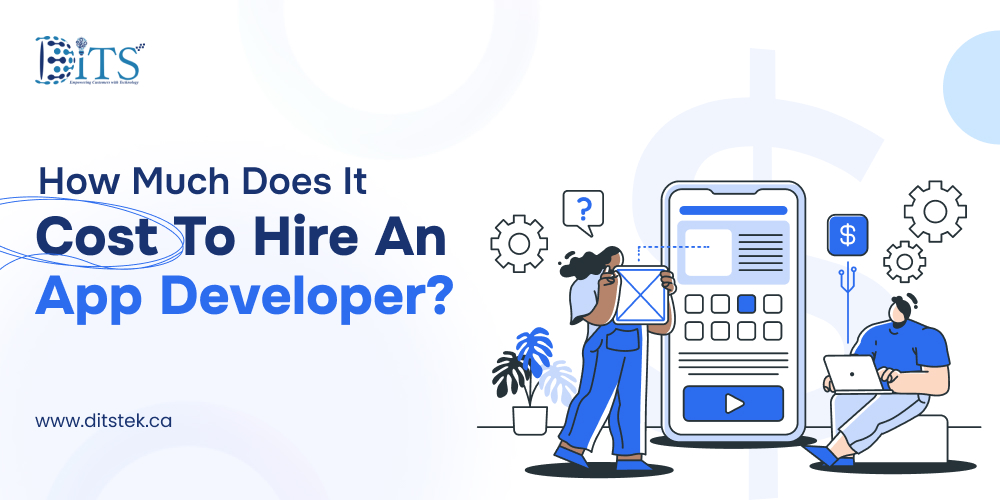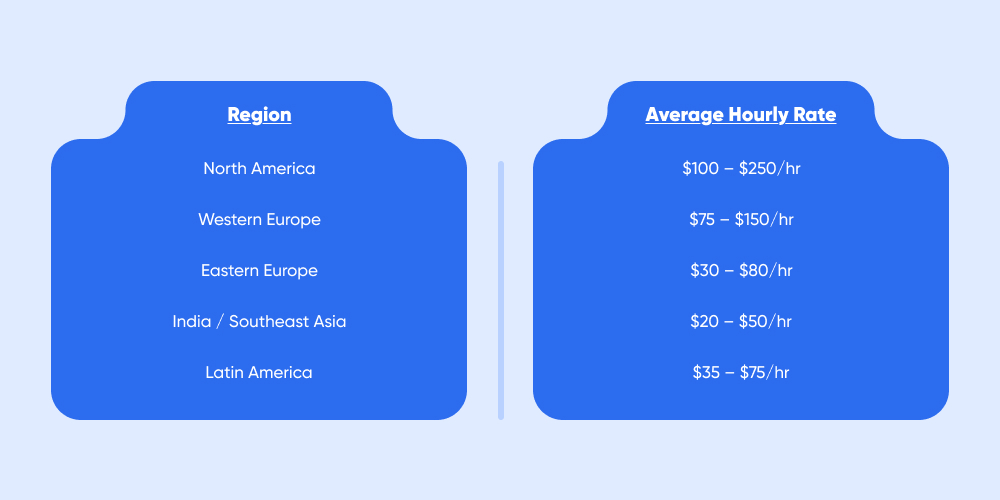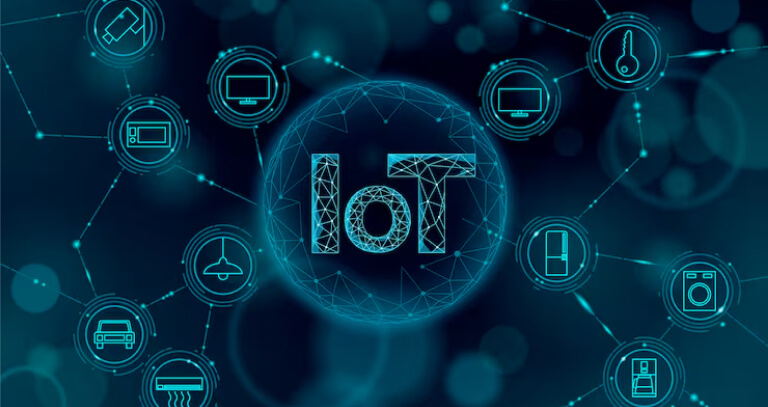How Much Does It Cost To Hire An App Developer?
Ditstek Blogs
Ask ten businesses how much they paid to build an app and you’ll hear everything from $10,000 to half a million. And the frustrating part? They’re all telling the truth.
Because app development isn’t priced like a product. It’s a service. And like any service, what you pay depends on who you hire, where they’re based, how you engage them, and what exactly you’re building.
That’s where this guide comes in.
We are talking about what actually drives app developer costs so you’re not budgeting blind or falling into common traps.
So whether you’re budgeting for a quick MVP or a full-scale product launch, this will give you the clarity you need to make smart decisions and avoid the common cost traps.
Let’s start with a quick breakdown to set the baseline.
Get a Custom App Quote in Minutes!
No guesswork, just real numbers tailored to your project scope, timeline, and tech stack.
What Does It Actually Cost to Hire an App Developer?
If you’re hoping for a straight answer like “$25K, give or take,” let’s save you the suspense: it doesn’t work like that.
App development pricing isn’t a flat fee, it’s a mix of what you’re building, who’s building it, and how deep you want to go. But that doesn’t mean you should be left guessing.
Here’s a quick look at what companies typically spend based on app complexity and who they hire:
| App Type | Freelancer | Mid-tier Agency | Top-tier Agency |
| Basic MVP / Utility App | $5K – $15K | $15K – $40K | $50K+ |
| Moderate Complexity | $15K – $40K | $40K – $100K | $100K+ |
| High Complexity / Scalable | $40K – $80K+ | $100K – $250K+ | $300K+ and up |
Now that you’ve got the rough figures, the “why” behind the price is where it gets interesting.
What Drives the Cost of Hiring an App Developer?

App development isn’t priced randomly, you’re investing in time, skill, and decisions. And the cost? From the type of app you need to the team you choose and the tech stack involved, every decision impacts your final cost.
1. App Complexity
The more your app does, the more it costs to build.
A simple calculator app or to-do list? That’s a short build cycle. But if you're creating a multi-user fitness platform with real-time tracking, push notifications, subscription models, and third-party integrations, you’re looking at months of work across dev, design, and QA.
Why it matters: Every feature whether its login portal, chat, geolocation, or payments feature adds time and increases development scope. That’s why clarity in your feature list helps you control both timeline and cost.
Cost Breakdown by App Type
| App Type | Typical Features | Timeline | Estimated Cost |
| Basic Utility / MVP | Minimal screens, simple functions, no backend or just light APIs. | 1–2 months | $10,000 – $25,000 |
| Data-Driven / API-Based | Login/auth, dashboards, dynamic content, external data handling. | 2–4 months | $30,000 – $60,000 |
| E-commerce / Marketplace | Product listings, user accounts, payments, admin panel, real-time inventory. | 3–6 months | $50,000 – $100,000+ |
| On-Demand / Real-Time Services | GPS, live status updates, multi-role users, messaging, push notifications. | 4–8 months | $80,000 – $150,000+ |
| Enterprise / Custom Internal Tools | Role-based access, analytics, integrations (CRM/ERP), workflow automation. | 6+ months | $100,000 – $250,000+ |
2. Platform: iOS, Android, or Both
Building an app for one platform is faster (and cheaper) than two. Native development means separate codebases for iOS and Android, which often means separate devs. That’s double the testing, maintenance, and bug-fixing down the line.
If you’re looking to optimize your budget or launch quickly, cross-platform frameworks like Flutter or React Native allow you to build once and deploy across both platforms. While going cross platform is not suitable for every app, especially those requiring deep native functionality, they’re often a practical choice for MVPs development or early-stage products.
3. Custom Design & UX
Design impacts more than aesthetics, it directly shapes the user journey, retention, and ultimately, your app’s success. If you're okay with basic UI kits or ready-made templates, your design costs stay low. But if you're aiming for more custom screens, animations, and user flows you need, the more time your design and app development teams will spend making it all work seamlessly. If you want a design that reflects your brand and isn’t just off-the-shelf, expect it to take more time and more budget.
4. Backend Requirements
Does your app need to store user data, process transactions, support real-time messaging, or connect with external APIs? That means building a secure, scalable backend, something many first-time founders underestimate.
A simple backend using Firebase might do the job for an MVP. But for anything involving sensitive data, dynamic content, or complex business logic, you’ll need custom backend development which comes with its own cost curve.
Worried About App Developer Costs? Let’s Simplify It
We’ll break it down for you, transparent pricing, no hidden surprises, and expert guidance.
5. Who You Hire
This is where pricing varies the most.
- Freelancers are typically more affordable and flexible, especially for smaller builds or MVPs. But you’ll need to manage them more closely.
- Agencies offer full-cycle development like strategy, design, dev, QA, deployment, all under one roof. It surely costs more, but you will get a structured development.
- Enterprise-level firms come with high hourly rates, but they’re ideal if your app demands strict security, scale, or regulatory compliance.
6. Location and Hourly Rates
App development cost also depends on the total experience and location of your team. An app development team structure typically consists of senior developers, project managers, UI/UX designers, business analysts and more. A senior developer in the US or UK may charge $100–$200/hour, while equally skilled talent in India or Eastern Europe could charge $25–$60/hour.

7. Engagement Model
How you structure the engagement also affects the price.
- Fixed-price works best for clearly defined projects with locked scope. You’ll get a price upfront, but changes later will cost extra.
- Hourly or time-and-materials gives you flexibility to adapt as you go but can lead to scope creep if you’re not tracking closely.
- Dedicated team models are great for scaling products or long-term development but come with monthly retainers and require closer collaboration.
8. Post-Launch Support and Maintenance
Launching your app is just step one. Once it’s live, you’ll need updates, bug fixes, performance improvements, analytics setup, maybe even new features based on user feedback.
Smart businesses plan for at least 15–20% of the initial build cost as an annual maintenance budget.
9. App Store / Google Play Deployment
Getting your app built is one thing and getting it live is another.
Both Apple and Google have their own submission guidelines, technical requirements, and review processes. Preparing for deployment means packaging the app properly, setting up store listings, handling certificates and provisioning profiles, and ensuring compliance with platform policies.
Some apps sail through review. Others hit snags that need debugging, re-submission, or UI tweaks. This step doesn’t usually break the bank, but it’s often underestimated in time and effort, especially for first-time launchers.
10. QA and Testing
No one remembers a pretty app that crashes.
Testing isn’t a checkbox, it’s a continuous process that ensures the app works smoothly across devices, OS versions, and user scenarios. From catching logic errors and edge-case bugs to validating performance under load, QA helps you launch with confidence.
QA software testing involves manual testing, automation, regression checks and more.. But skipping it? That’s how you end up paying twice: once to fix the problem, and again to fix your reputation.
Compare App Developer Costs by Hiring Model
See how freelancers, offshore teams, and agencies stack up like costs, pros, and ROI.
Freelancer vs Agency vs In-House: Who You Hire Shapes Everything
| Model | What You’re Getting | Budget Impact | Best For |
| Freelancer | Usually a solo developer or designer handling everything from code to UI. Freelancers are flexible and often affordable, but project management and quality control are on you. | Lower upfront cost, but potential hidden costs if things need to be redone or scale later. | Startups testing ideas, MVPs, or smaller features where timelines are flexible. |
| Agency | It offers a team with structures like designers, developers, PMs all working in sync. Offcourse hiring agencies are more expensive, but you're paying for process, reliability, and scale. | Higher cost, but also higher predictability and delivery speed. You get a partner, not just a coder. | Businesses building full-fledged apps with deadlines, scope, and long-term vision in mind. |
| In-House Team | Developers on your payroll, aligned with your business goals and available full-time. In-house team is the best for long-term products, but comes with hiring, onboarding, and management overhead. | Highest long-term cost due to salaries, tools, and operations but more control and real-time collaboration. | Companies with ongoing development needs, internal systems, or product-focused roadmaps. |
Hidden or Ongoing Costs You Shouldn't Ignore

The initial development cost is only part of the picture. Maintaining a high-performing app over time comes with additional responsibilities and expenses.
From regular updates to third-party service fees, these are the often-overlooked costs that add up post-launch:
- Maintenance & support: It includes regular updates, bug fixes, and compatibility checks with new OS versions.
- Hosting & infrastructure: Servers, cloud storage, and backend systems (especially for apps with large user bases or real-time features) can significantly add to ongoing costs.
- Third-party tools: Costs for APIs, analytics platforms, payment gateways, or authentication services can stack up especially if you're relying on premium or usage-based tools.
- App store fees: Both Apple and Google charge annual developer fees and take a percentage of in-app purchases.
- User feedback & upgrades: Responding to user behavior often means refining or adding features, which requires development time.
Also Read: How to Choose The Right Custom Software Development Services For Small Business
How to Stay Within Budget Without Compromising Quality?
Choosing the right development partner is one of the most important cost decisions you’ll make. Cutting corners here often leads to missed deadlines, technical debt, or full project rewrites down the line.
Here’s how to make a well-informed, cost-effective hire:
- Start with clear requirements. Know what success looks like for your MVP or product launch. Ambiguity leads to misaligned estimates and rework.
- Evaluate experience not just price. A higher rate often includes project management, quality assurance, and post-launch support. That can save costs (and stress) later.
- Prioritize communication and process. Ask how they handle scope changes, progress tracking, and quality control. Reliable communication keeps projects on track and within scope.
- Check references, portfolios or case studies. Look for past work relevant to your project type and complexity.
- Build in a contingency. Even with a solid plan, unforeseen changes happen. Allocate 10–20% of your budget for flexibility.
Smart hiring is about value alignment. When the scope, team, and process are well-defined from the start, you avoid unnecessary expenses and delays.
Budgeting Your Mobile App? Start with Real Costs
Use our insights to plan smart, avoid overspending, and choose the right team for your goals.
How Ditstek Innovations Helps?
At Ditstek Innovations, we don’t just build apps, we build the right app for your business goals and budget.
Whether you're launching a simple MVP or scaling a complex, feature-rich platform, we guide you through every step:
– Scoping the right features for your use case
– Choosing the most cost-effective tech stack
– Offering flexible engagement models (from dedicated developers to full-cycle teams)
– Prioritizing quality through rigorous QA and testing
– Providing transparent pricing with no hidden costs
Plus, our cross-industry experience means we understand the nuances that impact timelines and budgets, so we plan smarter from day one.
Need clarity on your app development budget? Let’s talk.
FAQs
1. What is the average cost to hire an app developer?
App development costs can vary widely based on complexity, scope, and the team you choose. On average, projects range from $25,000 for basic applications to over $150,000 for complex, feature-rich solutions.
2. Should I build for iOS or Android first?
This depends on your target audience and business goals. If most of your users are on one platform, starting there helps control costs and gather feedback before expanding.
3. What are the ongoing costs after launch?
Post-launch, you should budget 15–20% of the initial development cost annually for maintenance. This includes updates, bug fixes, compatibility upgrades, and performance monitoring.
4. Are low-code platforms or pre-built templates a reliable way to reduce costs?
They can be helpful for prototypes or internal tools but are often limited in flexibility and scalability. For customer-facing or enterprise-grade applications, custom development offers better long-term value.
5. What hidden costs should I be aware of?
Often overlooked expenses include third-party integrations (like payment gateways or analytics), infrastructure (such as servers or cloud storage), and quality assurance. Factoring these early ensures better cost control.
6. What’s the right choice: freelancer, agency, or in-house team?
Each has its merits. Freelancers are suitable for small-scale or short-term work. Agencies offer a structured, end-to-end approach with diverse expertise. In-house teams are best when product development is central to your business strategy.

Dinesh Thakur
21+ years of IT software development experience in different domains like Business Automation, Healthcare, Retail, Workflow automation, Transportation and logistics, Compliance, Risk Mitigation, POS, etc. Hands-on experience in dealing with overseas clients and providing them with an apt solution to their business needs.
Recent Posts
Get in touch











 Calgary | Edmonton | Vancouver | Toronto
Calgary | Edmonton | Vancouver | Toronto